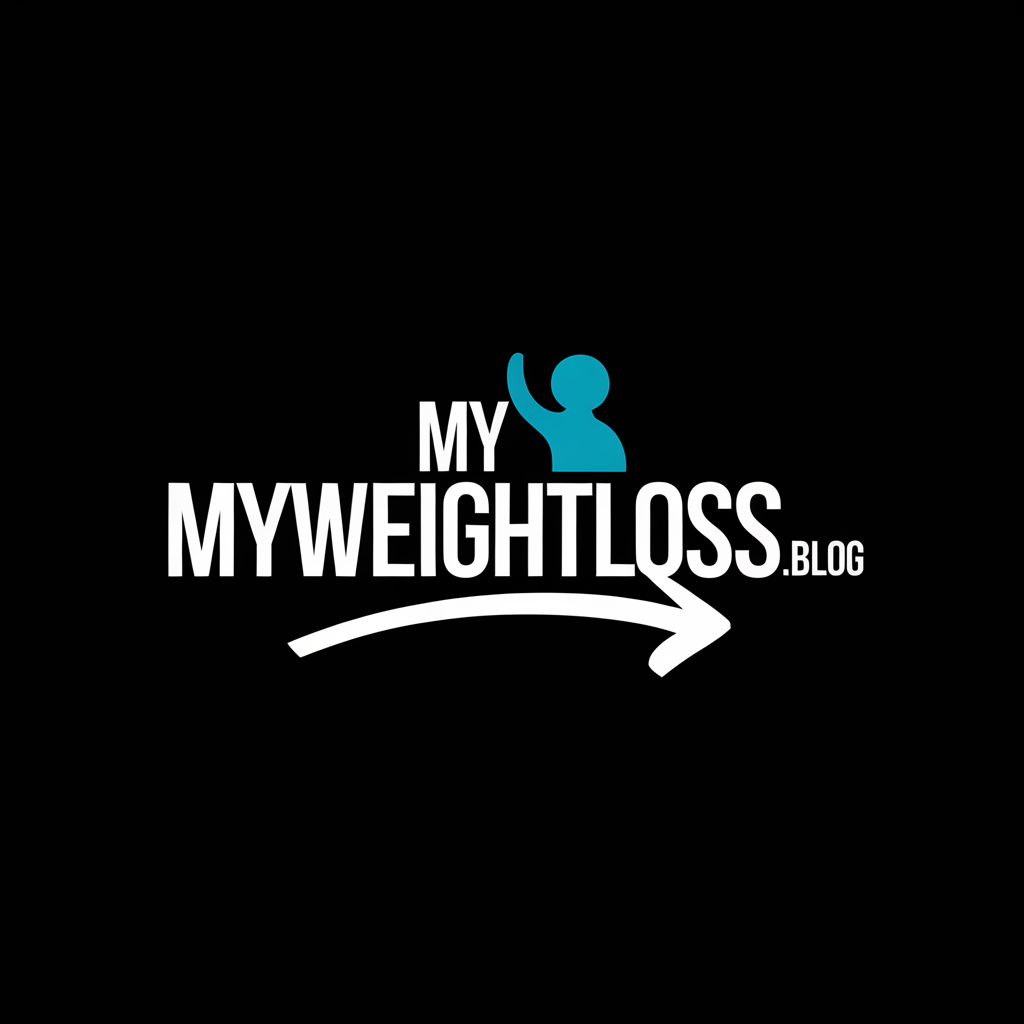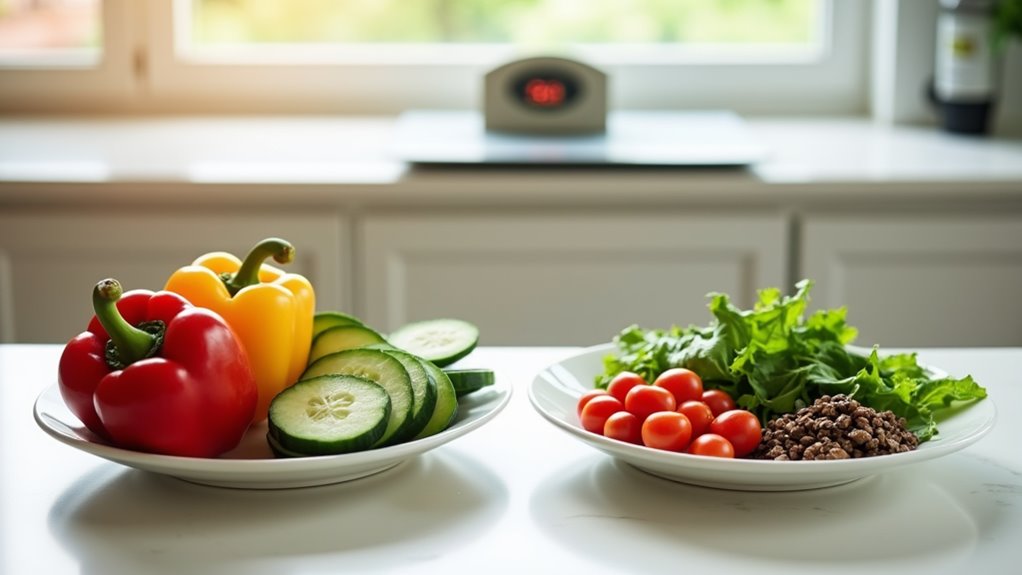Eat More, Weigh Less. the Diet Hack No One Is Talking About!
You’ve probably heard that eating less is the key to weight loss, but what if that’s not entirely true? The secret to sustainable weight management isn’t about tiny portions that leave you hungry – it’s about filling your plate with the right foods. By understanding volumetric eating, you’ll discover how to eat more while maintaining a healthy weight. Let’s explore this scientifically-proven approach that’s transforming the way people think about dieting.
Understanding Volumetric Eating: The Science Behind Eating More
While many dieters focus on restricting portions, volumetric eating takes a different approach by emphasizing foods that let you eat more while consuming fewer calories.
This diet hack works by understanding the relationship between food volume and caloric density.
You’ll find that foods high in water and fiber content take up more space in your stomach while providing fewer calories per bite.
Think of a large bowl of vegetables versus a small handful of nuts – both might have the same calories, but one will leave you feeling much fuller.
When you eat more volume through nutrient-dense, low-calorie foods, you naturally weigh less over time because you’re satisfying your hunger signals more effectively.
Your body responds to both the physical filling of your stomach and the nutritional content of your food.
That’s why this approach helps you feel like you’re indulging while actually eating fewer total calories. Additionally, high-volume, low-calorie foods are essential for maintaining satisfaction while losing weight.
Low-Calorie Foods That Fill Your Plate and Satisfy
When you’re ready to embrace volumetric eating, start by filling your plate with nutrient-rich foods that offer maximum volume for minimal calories.
You’ll want to focus on water-rich vegetables like leafy greens, cucumbers, zucchini, and bell peppers, which create satisfying bulk without excess calories.
Your best choices include fiber-packed fruits like apples, berries, and citrus, which keep you feeling full longer.
Add lean proteins such as chicken breast, fish, and egg whites to your meals – they’re filling and support muscle maintenance.
Don’t forget about legumes and beans; they’re protein powerhouses that add substance to any dish.
For snacks, reach for air-popped popcorn, which lets you eat three cups for just 100 calories.
Greek yogurt, cottage cheese, and clear broth-based soups are other smart options that’ll keep you satisfied while supporting your weight management goals. Incorporating lean proteins into your diet can help maintain muscle mass, crucial during weight loss.
Why Traditional Portion Control Fails Most Dieters
Traditional portion control fails because it ignores our basic psychological and physiological needs. You’re not alone if you’ve tried measuring tiny portions only to feel frustrated and deprived. When you restrict food portions without considering volume and satisfaction, you’re setting yourself up for diet failure.
-
Your brain responds to visual cues – a half-empty plate triggers feelings of deprivation even before you start eating.
-
Your stomach’s stretch receptors need physical volume to signal fullness.
-
You’re more likely to binge later when meals don’t provide enough physical satisfaction.
-
Social situations become stressful when you’re limited to small portions while others eat normally.
-
Your willpower depletes quickly when fighting constant hunger signals.
Instead of focusing on smaller portions, you’ll find more success by filling your plate with low-calorie, high-volume foods that satisfy both your mind and body. This approach allows you to eat generous portions while naturally reducing calories, making weight loss feel effortless and sustainable. Additionally, incorporating nutrient-dense foods into your meals can significantly enhance satiety and reduce cravings.
Volumetric Meal Planning: Your Daily Blueprint
Understanding volumetric meal planning transforms how you’ll approach your daily food choices. Instead of counting calories, you’ll focus on filling your plate with foods that pack maximum volume for minimal calories. This strategy lets you eat larger portions while naturally reducing caloric intake.
Start your day with a volumetric breakfast by adding berries and sliced apple to your oatmeal. For lunch, build massive salads using leafy greens, cucumber, and bell peppers as your base. Add lean protein and a light vinaigrette to stay satisfied.
At dinner, fill half your plate with steamed vegetables, quarter with lean protein, and quarter with whole grains. Between meals, keep hunger at bay with high-volume snacks like air-popped popcorn, cherry tomatoes, or celery with hummus. Incorporating high-fiber foods not only enhances satiety but also promotes overall health.
You’ll join thousands of successful weight managers who’ve discovered they don’t need to eat tiny portions to reach their goals.
Success Stories and Research-Backed Results
Real-world success stories continue to validate the effectiveness of volumetric eating. Research from Penn State University shows that people who follow this approach naturally consume fewer calories while feeling more satisfied.
You’ll join thousands who’ve successfully lost weight without feeling deprived or hungry. Clinical studies demonstrate that volumetric eaters maintain their weight loss better than traditional dieters, with success rates up to 80% after two years.
You’re not alone in this journey – countless others have discovered this sustainable path to weight management.
- Sarah lost 45 pounds in 8 months while eating larger portions than before
- A 2019 study showed participants felt fuller for 4 hours longer
- 92% of volumetric eaters reported improved energy levels
- Participants consumed 400 fewer daily calories without feeling restricted
- Group success rates doubled compared to conventional calorie-counting methods
These evidence-based results prove you can achieve your weight loss goals while enjoying satisfying meals. Additionally, quality sleep regulates hormones that influence hunger and satiety, further supporting weight management efforts.

